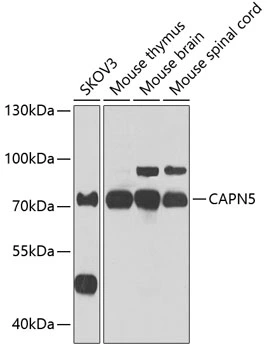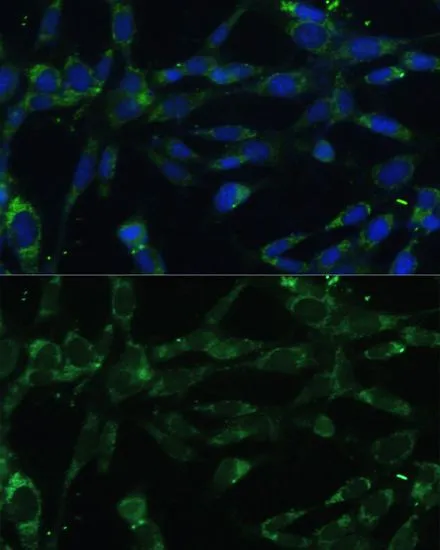
WB analysis of various sample lysates using GTX33057 Calpain 5 antibody. The signal was developed with ECL plus-Enhanced. Dilution : 1:1000 Loading : 25microg per lane
Calpain 5 antibody
GTX33057
ApplicationsImmunoFluorescence, Western Blot, ImmunoCytoChemistry
Product group Antibodies
TargetCAPN5
Overview
- SupplierGeneTex
- Product NameCalpain 5 antibody
- Delivery Days Customer9
- Application Supplier NoteWB: 1:500 - 1:2000. ICC/IF: 1:50 - 1:200. *Optimal dilutions/concentrations should be determined by the researcher.Not tested in other applications.
- ApplicationsImmunoFluorescence, Western Blot, ImmunoCytoChemistry
- CertificationResearch Use Only
- ClonalityPolyclonal
- ConjugateUnconjugated
- Gene ID726
- Target nameCAPN5
- Target descriptioncalpain 5
- Target synonymsADNIV; calpain htra-3; calpain-5; HTRA3; nCL-3; new calpain 3; testis tissue sperm-binding protein Li 91mP; VRNI
- HostRabbit
- IsotypeIgG
- Protein IDO15484
- Protein NameCalpain-5
- Scientific DescriptionCalpains are calcium-dependent cysteine proteases involved in signal transduction in a variety of cellular processes. A functional calpain protein consists of an invariant small subunit and 1 of a family of large subunits. CAPN5 is one of the large subunits. Unlike some of the calpains, CAPN5 and CAPN6 lack a calmodulin-like domain IV. Because of the significant similarity to Caenorhabditis elegans sex determination gene tra-3, CAPN5 is also called as HTRA3. [provided by RefSeq, Jul 2008]
- Storage Instruction-20°C or -80°C,2°C to 8°C
- UNSPSC12352203



